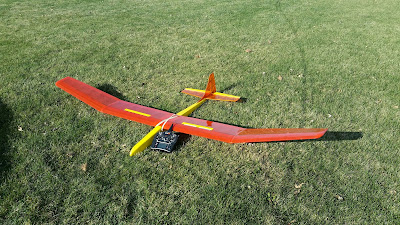As I moved from the 72 MHz radio control systems to 2.4 GHz spread spectrum technology I decided that I needed a better strategy for the transmitters used to control my model airplanes. I had written about this previously in the blog article “Upgrading to Spektrum DX9 Transmitter. Basically I didn’t want to end up with so many transmitters of different brands and then have the batteries in the transmitter start to fail and have to do so many battery replacements.
 |
| SD Card in Transmitter |
 |
| SD Card in PC to Download Code |
With the 250 model memory of the DX9 I could control more models than I would ever have in a lifetime. At two dozen models saved in my DX9 I was way over the 10 model limit I had with a Spektrum DX6i. Now there was the chance if there was a problem with the single DX9 transmitter, I couldn’t fly any of my two dozen models. While reprogramming the DX6i might work; the elevator trim lever wasn’t working on that transmitter.
 |
| Exporting Airplane Settings to SD Card |
My first DX9 was repaired quickly at Horizon Hobby but I was afraid if this happened in the middle of the summer, the wait could be longer. With both of my Dx9 transmitters I decided I would try copying the settings from the first transmitter to the new one. This is done by using the SD card that is easily removable in the transmitter. I saved out the settings for one sailplane to the SD card in the old transmitter, put that SD card in the new transmitter and tried to import the settings. This gave an error message on the screen of the transmitter.
 |
| Importing When Transmitter Code Levels Differ |
Like so many computer-controlled devices there is computer code in the transmitter that can be updated for bug fixes or enhancements. My old DX9 had the latest level of code but the new transmitter didn’t come with the newest level. I see this with the bios level in personal computers all the time too. What is different with the radio control transmitter is the serial number of your transmitter is somehow connected to the code and you MUST download the code for that serial number from the Spektrum website. I had tried to upload a code file saved from my first transmitter and it would not load.
This might sound rather overwhelming but it is really pretty easy once you go through it once. It gives the flexibility to copy any or all the model settings from one transmitter to the other one. Binding the transmitter to the receiver of the model will have to be done again if it was done with the other transmitter originally.
Computer technology, it is hard to escape it.
Bill Kuhl
Related Articles



























